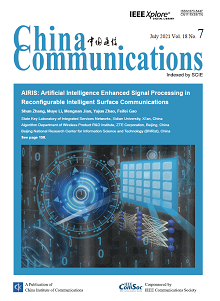EMERGING TECHNOLOGIES & APPLICATIONS
Ning Gao, Yong Zeng, Jian Wang, Di Wu, Chaoyue Zhang, Qingheng Song, Jachen Qian, Shi Jin
2021, 18(7): 253-264.
Wireless communication involving unmanned aerial vehicles (UAVs) is expected to play an important role in future wireless networks. However, different from conventional terrestrial communication systems, UAVs typically have rather limited onboard energy on one hand, and require additional flying energy consumption on the other hand. This renders energy-efficient UAV communication with smart energy expenditure of paramount importance. In this paper, via extensive flight experiments, we aim to firstly validate the recently derived theoretical energy model for rotary-wing UAVs, and then develop a general model for those complicated flight scenarios where rigorous theoretical model derivation is quite challenging, if not impossible. Specifically, we first investigate how UAV power consumption varies with its flying speed for the simplest straight-and-level flight. With about 12,000 valid power-speed data points collected, we first apply the model-based curve fitting to obtain the modelling parameters based on the theoretical closed-form energy model in the existing literature. In addition, in order to exclude the potential bias caused by the theoretical energy model, the obtained measurement data is also trained using a model-free deep neural network. It is found that the obtained curve from both methods can match quite well with the theoretical energy model. Next, we further extend the study to arbitrary 2-dimensional (2-D) flight, where, to our best knowledge, no rigorous theoretical derivation is available for the closed-form energy model as a function of its flying speed, direction, and acceleration. To fill the gap, we first propose a heuristic energy model for these more complicated cases, and then provide experimental validation based on the measurement results for circular level flight.
